As temperatures gradually rise across northwest China’s Xinjiang Uygur Autonomous Region, the vast farmlands have come alive with the bustling activities of spring plowing and sowing. The agricultural scene has been transformed into a display of modern technology, with tractors equipped with Beidou navigation system, crop-dusting drones hovering over fields, and other advanced farming practices. These high-tech farming methods have become a common sight, composing a harmonious "smart spring farming" symphony that echoes across northern and southern Xinjiang.
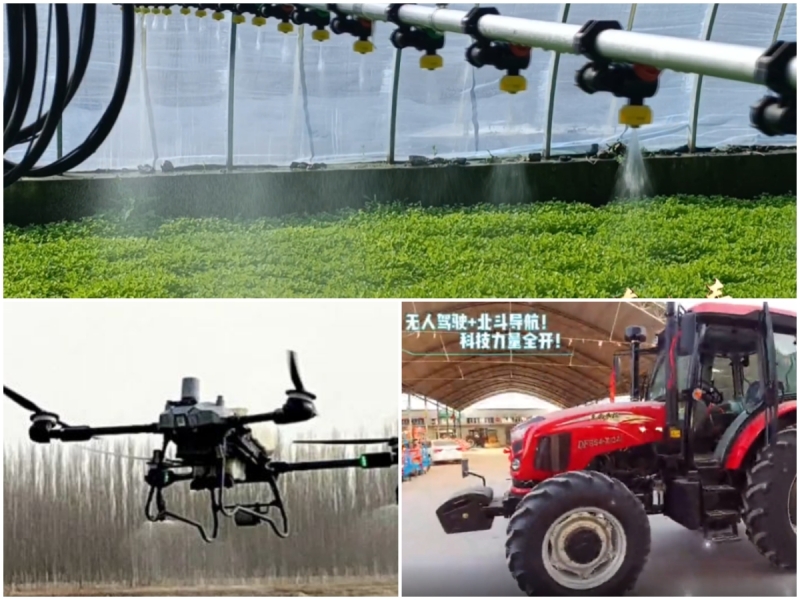
Spring sowing with Beidou navigation system
A new wave of agricultural modernization is sweeping through Payzawat County, Kashi Prefecture, where unmanned tractors equipped with Beidou navigation system are transforming traditional farming practices. These smart machines autonomously plot optimal field routes while allowing a single operator to remotely monitor and control multiple vehicles simultaneously. Real-time data on plowing depth, operating speed, and trench length are displayed with centimeter-level accuracy, significantly improving operational precision. This technological integration not only enhances work quality and consistency but also boosts overall agricultural productivity and profitability.
Modern farmers can now operate autonomous tractors with just a few taps on their smart phones. By simply inputting starting points and turning locations in a mobile application, these intelligent machines automatically calculate the most efficient field routes while performing complex operations like obstacle avoidance, U-turns, and precision turns completely on their own. This cutting-edge agricultural technology significantly reduces both labor requirements and operational time, allowing farmers to manage their field work with unprecedented ease and efficiency.
At the Naomaohu Farm of the 13th Division of Xinjiang Production and Construction Corps, local farmers have embraced cutting-edge agricultural technology by utilizing Beidou navigation system to enable fully autonomous spring sowing operations in their Hami melon fields. This advanced system allows for remarkable precision farming with a staggering accuracy of just one centimeter deviation per kilometer. The automated planting process achieves impressive daily coverage of 100 to 150 mu (about 6.7 to 10 hectares).
AI-powered seedling monitoring boosts yields
In the greenhouse of Xinlian Village, Qinggedahu Township of Urumqi High-Tech Zone (New Urban District), an intelligent temperature control system with advanced air heaters has created optimal growing conditions for spring seedlings.
Temperature sensors continuously monitor subtle environmental changes, while AI algorithms precisely regulate conditions to maintain perfect growing temperatures. This smart cultivation system has demonstrated remarkable results: weaker seedlings have significantly decreased, while overall production yields have increased by 20-30 percent. The technology ensures every young plant develops in carefully controlled and consistent conditions, showcasing how AI-driven precision agriculture can enhance traditional farming practices.
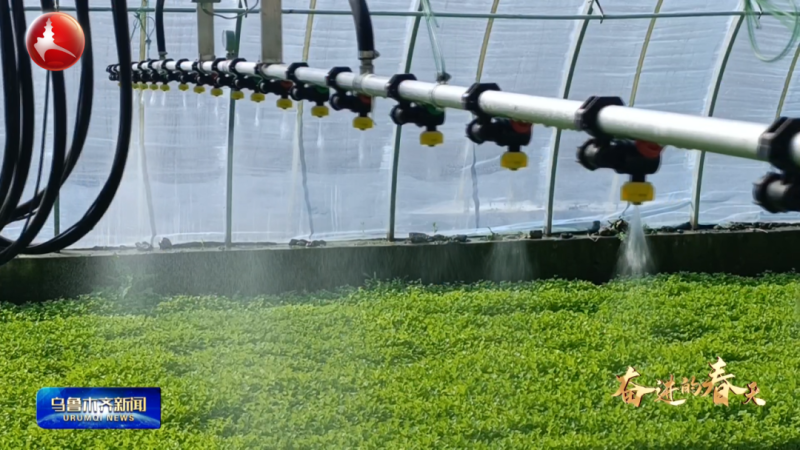
(Photo source: Urumqi News)
The first batch of seedling cultivation has commenced at a smart rice nursery factory in Midong District, Urumqi City.
Utilizing intelligent IoT control systems, the nursery machines precisely regulate light, heat, and water distribution across seedling trays to ensure optimal growth conditions. This industrialized seedling cultivation method demonstrates significant advantages over traditional manual approaches, shortening the growth cycle by 15-20 days while achieving an impressive 95 percent survival rate.
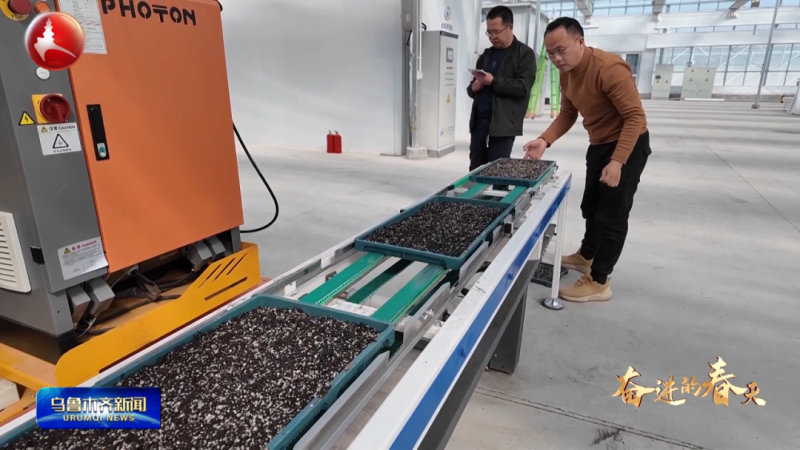
(Photo source: Urumqi News)
Across Xinjiang, a growing number of regions are embracing digital agriculture through smart technologies and AI-powered solutions. Advanced IoT systems now connect farmlands with big data platforms, enabling real-time monitoring and analysis of crop conditions.
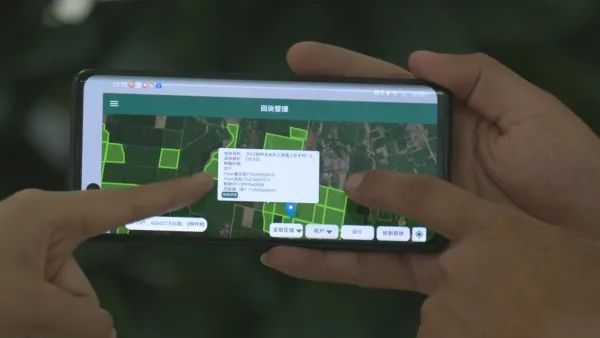
Cutting-edge technologies like satellite remote sensing, soil moisture sensors, and pest monitoring devices now provide real-time field data that seamlessly integrates with digital agricultural platforms. This data-driven approach enables agricultural technicians to make precise, science-based decisions, significantly improving farming efficiency across the region.
Aerial crop protection during spring plowing
In the wheat fields of Huiyuan Town, Huocheng County, drones take off with the simple press of a button, spreading fertilizer over the snow-covered ground and showcasing how technology is boosting spring farming production. This drone fertilization technique employs precise grid-based urea distribution, allowing the fertilizer to release gradually in low-temperature conditions. Not only does this method eliminate the risk of crop burn often associated with traditional manual spreading, but it also significantly improves fertilizer efficiency.
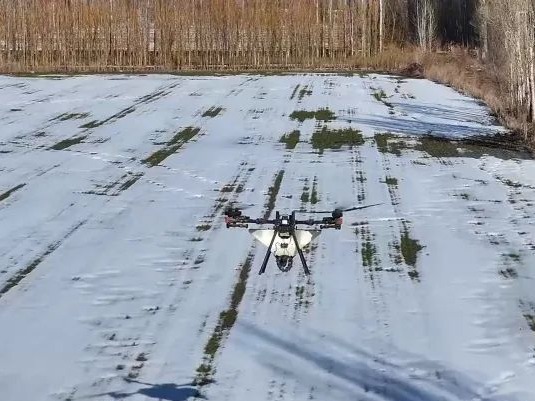
(Photo source: The Media Convergence Center of Ili Kazak Autonomous Prefecture)
Across all townships of Yengisar County, agricultural drone technology has been widely adopted to carry out comprehensive pest and disease control, safeguarding wheat yields and ensuring a stable increase in production.
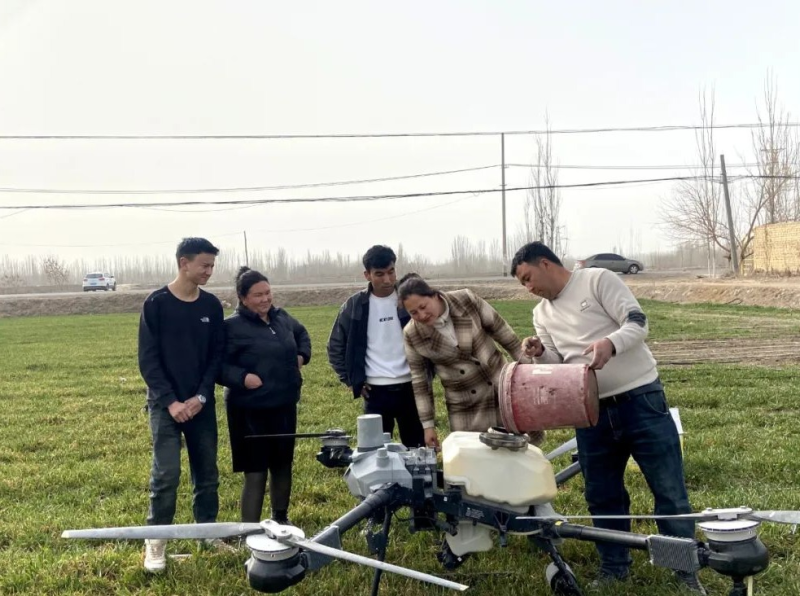
Loaded with pesticides, the drone operates under the guidance of its handler, flying at low altitude over wheat fields along pre-programmed routes and altitudes. With precision, it evenly disperses the pesticides across the farmland.

(Photo source: The Media Convergence Center of Yengisar County)
Unlike conventional manual spraying, agricultural drones equipped with Beidou navigation system perform aerial operations with pinpoint accuracy. This advanced approach not only eliminates common issues like uneven pesticide distribution and crop damage from foot traffic, but also ensures precise pesticide application. By significantly improving efficiency and reducing labor costs, drone technology has proven highly effective in controlling pest and disease outbreaks.
(Source: Urumqi News, the Media Convergence Center of Ili Kazak Autonomous Prefecture, the Media Convergence Center of Yengisar County and the Media Convergence Center of Payzawat County)









